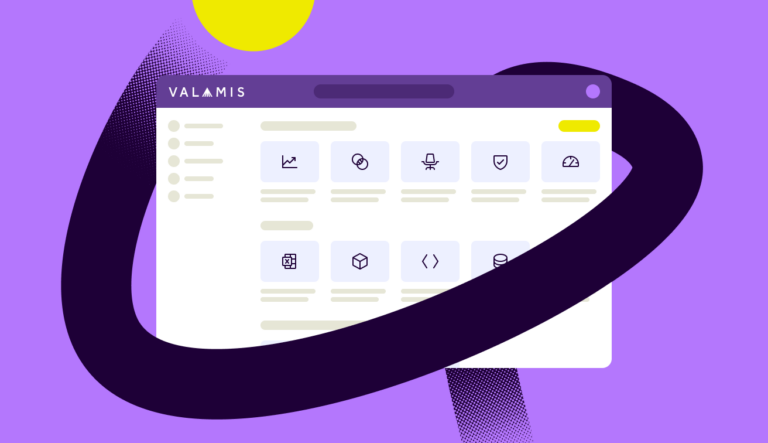4 ways digital learning solutions can help CLOs
How can learning solutions truly support Chief Learning Officers in reaching those big-picture strategic business goals?

How digital learning solutions can help CLOs achieve strategic business goals
Sales and marketing tend to be the focus for revenue growth and strategic business planning. Corporate learning is usually a forgotten aspect, although employee skills, knowledge, and behaviour are a major influence in successfully creating and selling products or services.
One reason that companies forgo a learning strategy in their overall business goals is because corporate learning has previously been hard to measure and manage. Digital learning solutions have changed this. This article discusses the possibilities that digital learning solutions provide Chief Learning Officers (CLOs) and other business executives to achieve their strategic business goals.
Whilst strategic goals vary for every company, they are all related to business performance, employee engagement, business growth and revenue. Ultimately, business executives are responsible for setting those goals. Driving the learning strategy, onboarding, skill development, performance improvement (upskilling or reskilling), and retaining talent are all part of the CLO’s job.
Goals are important in understanding the company’s direction and what is expected of its employees. These goals are usually set as KPIs, which are then measured to see if targets were hit.
Digital learning solutions can help CLOs and other business executives by:
- Setting and managing the learning strategy.
- Using the digital learning solution for improving the learning culture, managing learning content and skill development on an individual, team or organisational level.
- Measuring business KPIs / learning goals based on data.
- Providing data for decision making and strategic planning.
1. Setting and managing a learning strategy
If a learning strategy is not already in place (or not recently updated) before planning starts, the best approach is to analyse the company’s current situation of workplace learning. There are several ways to do this.
One approach might be to use a “communication framework for skill development from an organisational culture perspective.” This tool uses a wide analysis of any company. It looks at several themes of workplace learning in the company, alongside the obvious ones of current skills, skill development and personal development. Leadership and management, business strategy, capacity, employee work, and the workplace all influence learning.
It also looks at other elements that influence workplace learning, such as the learning culture maturity of a company, psychological contract, and other external elements. It can highlight the company’s alignments and misalignments (strong and weak points) in relation to workplace learning.

Communication framework for skill development from organisational culture perspective. M.Beenen
The company’s learning culture maturity level analyses how learning is integrated and accepted by the company. It examines the psychological contract, the agreements understood, perceived, and expected between company and employee, plus external elements. If the learning culture maturity is low or static, it will be less likely that employees will/can spend time on learning than when the learning culture maturity level is innovative or high.
The same goes for psychological contracts. If there are misalignments on an individual or team level, it is good to know which might influence workplace learning. After analysing the current situation (which elements enable or block learning and which are on the right path or need to be improved), it becomes easier to create or manage a learning strategy. Analysing the company’s current situation of workplace learning is the pre-work required for successfully starting with using digital learning solutions.
Analysing the company’s current situation will also help to decide what kind of digital learning solution a company will need.
What are the requirements to meet the learning strategy? How can misalignments or challenges be solved? How can positive findings be emphasised? Will the learning strategy rely on coaching, blended learning or automated skill development? What kind of content will be required? Will it be internally created content or external content to develop skills? What will be needed related to privacy settings or level of social learning?
Just a few questions you should consider. Choosing a digital learning solution and understanding its capabilities will also influence building your learning strategy. Therefore, choosing the right solution for your company is vital.
2. Using a digital learning solution to improve learning culture and manage learning content or skills on individual, team and organisational levels
Once a digital learning solution is chosen and the learning strategy set, CLOs can begin creating the optimal environment by considering what would work, what needs to be solved and how to do this on individual, team and organisational levels.
One of the first things the CLO should do is work on misalignments within the learning culture. Doing this from the start can help avoid engagement challenges later on. How much time are employees expected to use for learning each month, and is that realistic? Is the content useful for their specific skill development needs? What is the attitude towards learning in the different teams or roles? If issues are known, then they can be dealt with and discussed. For example, if employees are entitled to a few hours per week for learning, but in practice do not use it because of their workload, then this needs resolving.
The content available within a digital learning solution is especially important. It is easy to buy or create generic training, but does that cover all requirements? Instead, look at the current skill gaps, is content available that helps bridge the gap, especially for new skills or niche expertise? How much time should employees spend on learning, and how much content is available for individuals? How often is new content added? Do you need to include any compliance training? How are employees kept engaged; is it with blended or social learning or with quizzes that test knowledge? Everyone’s learning approach and needs are different, and the content needs to reflect this.
Finally, digital learning solutions can help with skill management. Providing and managing content without knowing the skills of individuals or teams is not helpful when strategising skill development. A digital solution should connect skills and skill levels to content and identify what an employee, or team, should be working towards. Employee profiles can help identify skill gaps related to a job role or team profile, find talent within a company for a new job role, and speed up the process for reskilling or upskilling. Often HR departments already have some form of skill-management system and integrating this with a digital learning solution only makes it more useful for the whole company.
There are many advantages of corporate learning via a digital learning solution. Primarily you know what people have been learning, which helps with consistency in team knowledge and a possibility to influence the quality of learning. Secondly, you can measure your learning strategy as well as skill development and content effectiveness.
3. Measuring business KPIs / learning goals based on data
Measuring your planning, analysing if employees are developing the needed skills, and seeing what content is effective and if skill gaps are being bridged are the main reasons a digital learning solution is more effective than traditional learning methods. This is all thanks to APIs (which document information about the users, pages and content), xAPIs and other measurable data.
For example, an xAPI (eXperience Application Programming Interface) collects the learning activity data of individuals or groups and stores it in a learning record store (LRS). This data can be traced, shared and analysed; for example, into reports or data visualisations. Any xAPI statement is build up with an actor, verb and object in the “Jane” “completed” “onboarding course”. The activities can also include properties that are related to results (completion, success, score, response), contexts (registration, instructor, revision, platform, language etc.), extensions (more info about object, result or context elements) or timestamps (e.g., start or end time, when video completed or duration of learning).
When measuring business KPIs, API and xAPI statements are invaluable if the business KPIs are solid. An example of this is the SMART approach: specific, measurable, attainable, relevant and time-bound. It is good practice to have these aligned with a long-term strategy, measured quarterly, with a limited number of goals and clear measurements, always ensuring that they fit the whole company. By measuring your KPI’s every quarter, it is possible to adjust or take steps towards reaching your goals. Deloitte states that “companies that revisit goals quarterly are 3.5 times more likely to be in the top quartile of business outcomes.”
CLOs usually focus on KPIs related to individual, team or organisational skill development, bridging skill gaps, reskilling or upskilling and employee or content engagement. But there are also behavioural metrics that show how employees are using the platform, e.g., in the form of comments, likes, shares and other communication, can be of great help. Some questions that could be asked are related to what team is performing well and why, what skills are needed in the teams, which content is engaging employees, and which content helps people remember certain knowledge. It’s also important to ask do employees remember content after listening, and how do we know what employee can fill in a new job role that demands certain skills? There are also business KPIs that can be connected to the learning strategy, ranging from ROI to Customer Acquisition Costs, and from Operating Expenses Ratio to Employee engagement. Consider how learning can become a part of reaching these KPIs. For example, operating expenses ratio; what areas can be improved and how can training help here, or how can training be measured in connection to the KPIs.
4. Using data for decision making and strategic planning
Once KPIs are defined and data is set to be traced and stored in the learning record store, results can be set up to appear in reports or dashboards. Executives will benefit from digital learning solutions that analyse and manage data and visualise it through reporting tools. Although doing this requires planning, the analysing process itself is faster and drives better business decisions, spotting problems early on or identifying trends.
Data helps us see how well the organisation, teams, or individuals are doing. CLOs can use data for adaptive learning, intervene when something does not go according to plan, or continue something that works well. Decision making and strategic planning are now based on measurements, and workplace learning can be adjusted and optimised. The same goes for measuring how learning influences certain business KPIs. How does an individual, team or organisation perform before and after training? Where are the skill gaps and how effective is training to bridge these gaps? How much time are high-performers spending on digital learning in comparison to low-performers and what kind of content is useful for certain job roles? By looking at the data that answers these questions, it is then possible to improve the business KPIs.
An example might be that a startup has introduced a product to the market. Management sets a KPI to sell 10.000 items of Product X in the first year. After three months the KPI is measured, and it seems that the product is not selling as expected. It appears that employees who have followed training on the company’s LXP outperform employees who haven’t followed the training with 73%. Training is organised for all employees who sell product X and after another 3 months, the company can measure that training has improved sales and their KPI is back on target. Another example is that a company has a skill gap that causes its operations to be ineffective. By realising this via skill gap analysis on their LXP, they upskill several employees, turn the situation around and improve their customer retention.
Conclusion
Digital learning solutions help CLOs and business executives to be more effective in their daily work. They can work faster and get detailed data to make better informed decisions whilst measuring learning in an easier, consistent way. Although the planning phase is vital and a company should dedicate time and resources to this phase, using a digital learning solution can only be successful if the company:
- is aware of the pains and gains of its current learning situation and the different aspects that influence workplace learning and skill development.
- is actively managing a learning strategy as part of the business strategy.
- has a good set of business KPIs that are connected to its learning strategy.
- has set up the digital solution and gets the right data for analytics, reports and dashboards so business KPIs can be measured and help CLOs and other business executives reach their business goals.
When a digital learning solution is done well, CLOs and business executives can benefit greatly from insights that a digital learning solution can provide for decision making and strategic planning. Compared to traditional learning, where courses are often infrequent with variable duration and quality, it is a refreshing, detailed and fast way of managing learning and improving company performance with the help of skill development on a large scale which has not been possible before. A digital learning solution does not only benefit companies but also employees that have the opportunity to learn in the workplace. Forbes mentions that 93% of employees will stay longer at a company when that company invests in their career development. When a company is able to identify talent and skills gaps, and work on employee development based on data, digital learning solutions can be a win-win for everyone.




